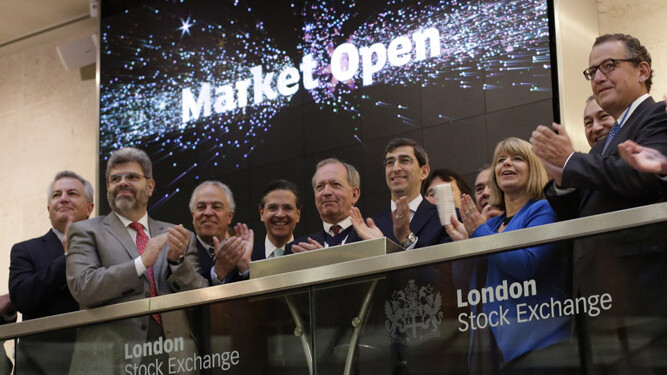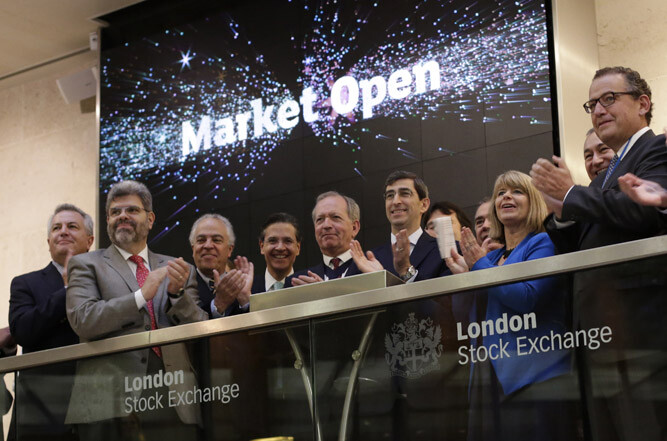Trading Up
The Pacific Alliance has been a big success so far. Now it looks like its integrated financial market, Mila, is finally set to follow suit…

Almost five years since its launch, most people regard the Pacific Alliance as a success. Made up of Chile, Peru, Colombia and Mexico the trade group was seen as a market-friendly, pro-business alternative to Latin America’s biggest bloc, Mercosur. In marketing terms the Alliance has proved a useful way to attract international investors to the member countries, with a combined GDP larger than Brazil. While in economic terms the group has managed to outperform the rest of Latin America, with higher GDP growth and lower inflation than the regional average.
But that success didn’t extend to one of the Pacific Alliance’s most important initiatives – Mila. The Mercado Integrado Latinoamericano, was launched in 2011 as a part of an ambitious plan to integrate the financial markets of the four member countries. Mila is a platform allows investors in one country to freely trade equities listed on the exchanges of fellow members. The idea is to create scale by pooling the financial assets of the four countries. A virtuous scale is expected as this increased scale and liquidity attracts more international capital. Yet, so far at least, Mila has been a slow starter, with low trading volumes and few products.
Getting started
On the face of it the Pacific Alliance picked the worst possible time to launch its integrated markets project. Back in 2011, Latin America was still riding high on the commodity super-cycle and local bourses were booming. But since then a crash in mineral and oil prices – the major exports of the member countries bar Mexico – has sent their stockmarkets tumbling. These losses have understandably hit investor appetite, causing trading volumes to fall as investors look for better returns on their capital.

Take Colombia for example. On the 31st of July 2015 the market cap of the Colombian stockmarket, the Bolsa de Valores de Colombia (BVC), stood at $319billion, down from almost $450billion in 2012. Trading volumes also fell with the average daily amount of equities moved falling to $143million so far in 2015 from $187million in 2012. Fixed income has also seen a sharp drop. The daily volume traded in 2014 was $4.3billion, less than half the $8.8billion average in 2010.
A similar story can be seen elsewhere in the region. For example, the lack of liquidity in Peru’s stockmarket, the Bolsa de Valores de Lima (BVL), led to global index compiler MSCI threatening to downgrade it to ‘frontier’ status. The situation has been exacerbated by weaker currencies, which help to worsen investment returns when measured in dollars. 2015 has been particularly harsh in this respect and so far this year, in dollar terms, Colombia’s stockmarket is down by 37%, Chile’s and Peru’s by 14%, and Mexico’s by 12%.
Given the above, it is no surprise that Mila investors have suffered. For example, the S&P Mila 40, an index that tracks the fortunes of the 40 largest equities on the Mila platform, has lost about a third of its value so far this year.
Buying opportunity
From what you’ve read so far you could be forgiven for thinking that the Mila project is doomed to failure, yet there are several reasons to be optimistic, says Juan Pablo Córdoba, CEO of the BVC. “Of course the last 18 months have been difficult but a lot of equities are looking very good value right now. If you believe in the medium-term growth potential of these countries then this could be a perfect entry point.”
Paradoxically the currency factor, which has exacerbated the losses for international investors in these markets, is also helping to stabilise these economies by acting as a shock absorber to external pressures and helping to make their exports more competitive globally. When the currencies stabilise against the dollar, however, it would help to stem equity losses. “Right now the dollar is not helping [equities]”, says Diego Icaza CIO of BBVA Asset Management Peru, “while the possible rise in rates during next 12 months would hurt the region as a whole. So it could be a dead year for the next six to 12 months in terms of capital investment in emerging markets, but after that we should see a pick up.”
"If you believe in the medium-term growth potential of these countries then this could be a perfect entry point…"
Another huge potential driver could come from the member country pension funds. Together these funds manage $450billion of assets. This figure is expected to keep growing as Colombia, Peru and Mexico have only recently implemented a mandatory pension contribution system that owes a lot to the successful Chilean model. At present just 1% of the total sum is invested in other Pacific Alliance stockmarkets, leaving plenty of room for allocations to be increased. One of the big stumbling blocks at the moment is the strict allocations that pension funds have on international investments. There is talk of classing equities in other Pacific Alliance markets as domestic, which would send a wave of capital flowing around the Mila markets.
Boosting volumes
Liquidity is also a major factor. Investors, especially international ones, want to know that they can easily dispose of their holdings if needed. As such Mila’s next challenge is to boost trading volumes. One big driver in this area is renewed political support from the Pacific Alliance governments themselves, says Cordoba. “The governments have now identified the integration of capital markets as the next key milestone for the pact. They are going to be working on reducing the regulatory barriers that still exist for some financial transactions between countries.”
Pedro Zorrilla, COO of the Mexican stockmarket, the Bolsa Mexicana de Valores (BMV), agrees. He notes it will be “useful to develop and maintain a regulatory reform agenda with objectives to make the Mila mechanism as frictionless as possible and achieve a far-reaching agreement in terms of asset classes.”

Standardising issues such as tax and regulatory requirements will make it less burdensome for investors to use the Mila platform. What’s more, it should also encourage more Mila-specific products to be created. “Each of the four countries in Mila is a gateway to this regional investment pool”, says Zorrilla. “Financial intermediaries have grown in their presence in the Mila market and this is critical to the project since they represent the specific points of entry, they must develop Mila as part of their products for both investors and issuers.”
Clearly the poor conditions in the market haven’t helped with product development, yet for their part Mila’s members are doing their best to encourage it. “We have been working on several initiatives that will provide investors, brokers and custodian banks with new functionalities that should increase transaction volume”, says Fernando Yañez, CEO of Chilean clearing house, the Depósito Central de Valores de Chile (DCV). “On the market side, we are constantly searching for new instruments to incorporate to Mila´s platform. Regarding operational innovations, we can mention the new facilities provided to the custodian banks to have direct access, and modifications that are being carried out by the depositories for an even safer settlement process.”
Success or failure?
Critics of the Mila initiative say that the low trading volumes across the platform and the dearth of products available are a measure of its failure. But for many, the fact that Mila, the first type of project like this in Latin America, got off the ground, is a significant success.
“By making it happen we have moved the discussion on”, says Cordoba. “Instead of people asking if an integrated Latin American market is possible, they are now thinking of the best way to do it. The private sector has shown the potential of this initiative and that leads for public sector support with the regulatory framework.”
Yañez agrees, and believes that it is too early to start passing definitive judgement on the platform. “Mila was born with long term thinking. The four countries that participate in Mila and their respective market entities knew from the beginning that this was going to be a long road to travel.”
When looked at as more of a medium to long-term proposition, then it becomes apparent that the work so far has been a case of laying the foundations, says Zorrilla. “The Mila value proposition is twofold; on one hand a Latin American financial assets market for Latin Americans, and on the other hand a region for attractive and diversified investment for global participants. All is set – now is the time to fully develop it.”
There has been some international interest in Mila, for example S&P Indices created the S&P Mila 40 Index. But Mila’s operators are keen for more global investors to get the message and are participating in a number of roadshows, including one at the London Stock Exchange. “The UK is an international financial centre of excellence”, says Zorrilla. “We cannot think about promoting and positions Mila without approaching the British investors and managers.”
Like most truly pioneering projects, Mila has encountered difficulties. But, after overcoming some of the most difficult challenges, it’s clear that Mila now has a bright future ahead of it. British investors should keep a close eye on the story as it develops.